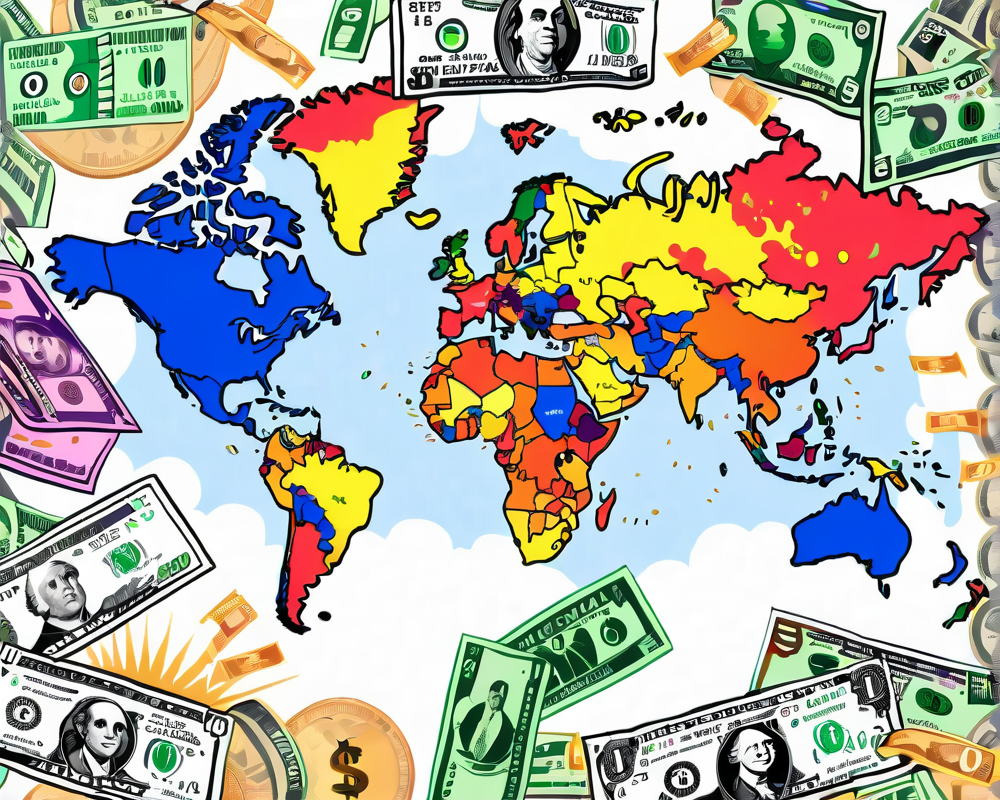Understanding Currency Wars
The term ‘currency war’ is about as comforting as a belly flop into a pool full of Lego bricks. It refers to the competitive devaluation of currencies by governments or central banks. With central banks armed to the teeth with monetary policy tools, they’ve resorted to all sorts of shenanigans to combat deflation. You may be looking at your bank account balance and wondering, is this really the best we can do?
Current State of Central Banks
In the grand theater of global economics, 15 central banks have rolled out the red carpet for monetary easing this year alone. This isn’t just a casual stroll in the park; it’s a flex of economic muscle that sends ripples across nations struggling to keep their own financial houses in order. It’s like acrobatics but for economics, and I assure you, there are definitely some major missteps happening.
The U.S. Dollar: Climbing Higher
Let’s talk about the U.S. dollar — the overachieving student in the classroom of global currency. After bottoming out in 2011, it appears to have been hitting the gym ever since, seeing significant gains since 2014. Whatever workout routine it’s on, others like the Australian and Canadian dollars seem to have missed the memo and are now experiencing a downward spiral. In these times, we wish we could trade in our currency climb for a bit more strength in our purchasing power!
Deflationary Trends and Commodity Prices
In classic ‘wait what?’ fashion, while central banks are shouting “stimulate!” from the rooftops, commodities are throwing themselves off a cliff. Commodities are down dramatically since their peak, which shouldn’t happen in a supposedly recovering economy. It’s a bit like finding out that your favorite pizza place is now only serving kale smoothies after you’ve just had a major life event. What’s going on?
Bond Market: A Cautious Investor’s Dream?
Transfer your attention to the bond market, which is as welcoming as a lukewarm cup of coffee. The yield on the 10-year bond is inching toward record lows, hinting that investors aren’t too thrilled about our recovery narrative. It’s reminiscent of that person at a party who stands in the corner, shaking their head at everyone’s joyful chatter. A sign of the times? You bet.
The Domino Effect of Mismanaged Monetary Policies
The actions of central banks are cascading through the global economy, creating ripples as dramatic as a game of Jenga. With every move, they export deflation like it’s the hottest new trend—while local economies scramble to address their own challenges.
Emerging Economies: A Cautionary Tale
Emerging economies like Brazil, Russia, India, China, and South Africa (commonly known as BRICS) are struggling. The misallocation of capital is leading to excess capacity—think of it as buying way too many holiday decorations and then wondering why your closet is bursting. The reality check is coming, folks, and it’s not going to be pretty.
Concluding Thoughts: A World Awash in Imbalances
As we drift along in this sea of economic chaos, central banks seem to be drowning in their own policies, leaving the rest of us trying to find our flotation devices. The complexities of these monetary systems can feel overwhelming, making us nostalgic for simpler times when our biggest concern was deciding whether to pick vanilla or chocolate ice cream for dessert.
In times of uncertainty, it’s imperative to seek transparency and protect personal financial interests. After all, having financial freedom is not just a pie-in-the-sky dream—it’s a basic right. With increasingly vocal proponents of alternative assets like Bitcoin, it might be time to reassess our reliance on traditional fiat currencies.



